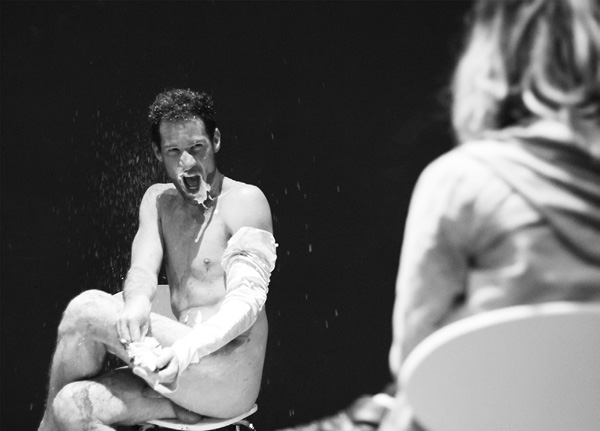
FREAK SHOW PARK
first performed on March 11, 2016
Casa das Caldeiras, Coimbra, Portugal
performed once in 2016
MOVIMENTO SEM PREGA / ANDRÉ ROSA, ANDREIA MORADO, DANIEL PROENÇA, PEDRO VAZ
Coimbra, Portugal / Lisbon, Portugal / Porto Alegre, Brazil / Berlin, Germany
067986398j067986398m067986398o067986398v067986398i067986398m067986398e067986398n067986398t067986398o067986398s067986398e067986398m067986398p067986398r067986398e067986398g067986398a067986398@067986398g067986398m067986398a067986398i067986398l067986398.067986398c067986398o067986398m
movimentosemprega.com
FREAK SHOW PARK
MOVIMENTO SEM PREGA / ANDRÉ ROSA, ANDREIA MORADO, DANIEL PROENÇA, PEDRO VAZ
“Freak Show Park” was part of the Performance Agora! program organized by the Academic Theater of Gil Vicente, at the University of Coimbra. As members of Movimento Sem Prega we proposed performance events that occurred simultaneously, where the effective interaction of the public determined the development of each attraction/game.
The Coal Room, in the Casa das Caldeiras, remained open for anyone to enter and interact with as many times as desired during the four hours of performance. The actions used imagery of popular fairs and amusement parks to activate repositioning and modes of subjectification, where attractions questioned the limits and edges of power and desire in the production of differences and monstrosities.
In “Kombo,” I invite each participant to sit in front of me and choose three different objects, arranged on a white towel. I ask the participant to narrate how I should handle/interact with each of the objects in turn. The invention of each narrative depends exclusively on the desire of each participant to elaborate, prepare, and realize their fantasies through/in my body, determining the outlines of pleasure and fetishes, in a game between power and interests.
In “Por um Fio,” Andreia Morado stands naked, rolled up in dozens of red-line reels, the deforming strokes caused by the threads marking her skin. She stands unmoving, compressed by the red wires strewn across the floor. Various sharp objects such as knives and scissors point to her body.
In “Yellow Day,” Daniel Proença proposes a simple action: to fill the party balloons. The stuffing of each balloon uncovers or obstructs what each of them contains of uncertainties and sayings. The action places the balloons inside their clothing, which then acts as a kind of skin.
In “Mamihlapinatapei,” Pedro Vaz evokes, through sound, noise, and possible musicalities, layers that overlap with other sound movements. The experience is shared only between him and his guest—earbuds unite them by the act of hearing each sound, effected in permanent relation, and maintained through direct eye contact.